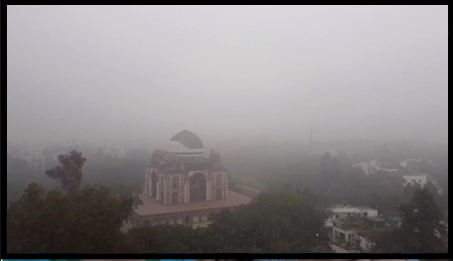WHY DID NORTH INDIA FOG HEAVILY IN LAST WEEKS OF 2023?
Why in the News?
- Fog descended on northern India in late December 2023 and early 2024 due to winter conditions.
Source: The Hindu
- Minimum temperatures varied, ranging from 6-9 degrees Celsius in some areas and 10-12 degrees Celsius in others.
- Dense fog was reported in several states and regions, including Haryana, Chandigarh, Uttarakhand, Uttar Pradesh, Bihar, Rajasthan, Madhya Pradesh, Jammu & Kashmir, Himachal Pradesh, Odisha, Chhattisgarh, Jharkhand, and Uttarakhand.
- The dense fog significantly reduced visibility, with some areas experiencing visibility as low as 50 meters.
- The aviation sector was severely affected, with approximately 450 flights delayed or canceled at Delhi’s Indira Gandhi International Airport on December 27. On December 29 and 30, nearly 100 and 80 flights, respectively, faced delays in Delhi.
- Train services to Delhi also experienced delays due to poor visibility and dense fog on December 29. At least eight trains scheduled to arrive in Delhi on the night of December 28 were delayed, and some trains scheduled for the morning of December 29 were also impacted.
- Fog is formed by tiny water droplets that develop when evaporated water cools and condenses near the Earth’s surface.
- Factors contributing to fog formation include temperature differences between the ground and the air, high humidity, and abundant water vapor.
- Fog is a common occurrence during Indian winters, particularly when temperatures drop during the night and early morning.
- Various mechanisms, such as infrared cooling and radiation fog following an unusually warm day followed by a rapid temperature drop, contribute to fog formation.
- Northern India, especially the Indo-Gangetic plains, is susceptible to fog during the winter due to factors like low temperatures, slow wind speed, moisture availability, and the presence of aerosols.
- Moisture can also enter the region from Western Disturbances or the Arabian Sea, further contributing to the formation of fog.

 Source: The Hindu
Source: The Hindu

